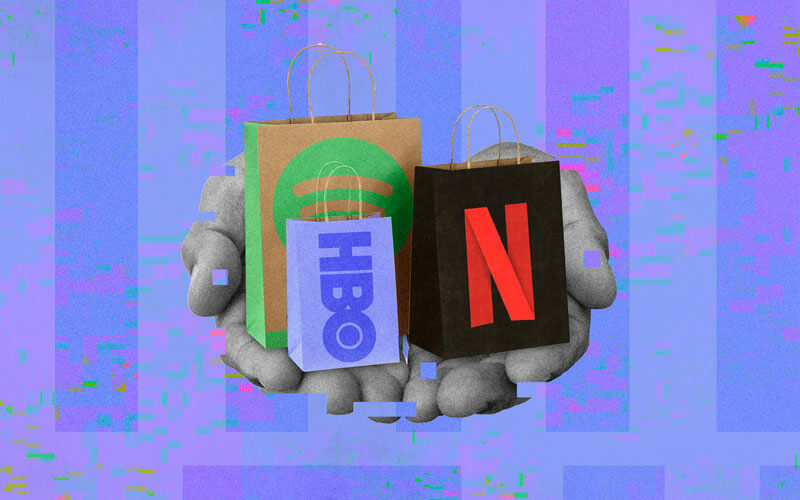If only it was just Elon Musk and his ‘super bad feeling’ about the economy.
We know to take his tweets with a pinch of salt – after all, he promised he’d have a man on Mars by now. Unfortunately it’s not just Elon. Y Combinator has issued a chilling black swan memo, and leading VC firms are chiming in on the sentiment: a significant downturn is brewing.
The last time we saw a black swan event was the start of the pandemic. Surely it can’t be time for panic stations again already?
What’s happened?
Uber CEO Dara Khosrowshahi sent a round robin to employees in mid-May declaring: “It’s clear that the market is experiencing a seismic shift and we need to react accordingly.”
A week later, Y Combinator issued an ominous missive with the TLDR that “things don’t look good” and that investors will be slowing their deployment of capital. Founders should think seriously about how to – or if they can – survive the next 24 months in a fundraising environment that will look nothing like the one they may be used to.
Legendary VC firm Sequoia Capital sent its portfolio its own doomsday memo entitled ‘Adapting to Endure’. The memo was soon leaked to the press and comparisons were quickly drawn with the infamous memos Sequoia sent its portfolio companies during the burst of the dotcom bubble, and the depths of the global financial crisis.
In tandem, Reach Capital has warned its founders to prepare for “an extremely capital constrained environment” and to focus on fundamentals. January Ventures is offering its founders mental health and wellbeing workshops. While Lightspeed Venture Partners declared on Medium that the “boom times of the last decade are unambiguously over”, and urged founders to adopt a ‘default alive’ state (more on this later) rather than pumping cash into recruitment or innovation.
Why is this happening?
There’s been poor government policy
Faced with a global pandemic in early 2020, governments and central banks the world over flooded the financial system with cheap and plentiful cash. In fact, central banks had been doing this since 2008. Although this policy was not enough to stop a deep global recession in 2020 due to the sudden stop in economic activity caused by lockdowns, the recession was short. As economic activity rebounded in 2021, governments and central banks were too slow to reverse these policy settings and inflation began to grow.
There’s a war on
The war in Ukraine is feeding inflation even further. It is sending fuel and commodity prices soaring. Rising energy prices mean rising costs for everyone on everything from groceries to gadgets. The war in Ukraine is also contributing to a “significant slowdown” in global growth. The global economy was growing at a rate of around 6.1% in 2021, and that rate is predicted to halve over the next 2 years.
There’s a global cost of living crisis (COLC)
These poor policy decisions, the war and the ongoing supply chain disruptions caused by COVID have caused a COLC. Power prices in Australia could surge by up to 18.3%, and the energy crisis in the UK is sending millions into fuel poverty. During COLCs, people struggle to buy food, which means they struggle even more to buy consumer goods and technology products. This negatively impacts the bottom line of all businesses that sell directly to consumers (B2C). It also negatively impacts upon companies that sell directly to these businesses (B2B), as less revenue coming from consumers, means pressure to cut costs. Which product is a pain killer and which product is a vitamin pill is put to test.
There’s a recession outlook
In response to global inflation, the US Federal Reserve and other central banks worldwide are rushing to increase interest rates. This is spreading recession sentiment around the world. Goldman Sachs are signalling a 35% chance of a US recession by 2024 (it’s times like these we wish we weren’t quite so intertwined with our American friends). This increases the risk that the global economy will enter a period of stagflation for the first time in 50 years. Stagflation is widely held to be a nightmare scenario for investors: poor growth and inflation. This dampens the prospects of generating real returns for investors across almost all asset classes. This has major implications for the global economy and the early stage funding markets.
People are getting laid off
The COLC and recession outlook come just as workers worldwide thought they’d finally gained ground with their flexible working demands and mass resignations. Our jobs aren’t as safe as we thought with tech firms slashing their workforces. Some of this is due to exaggerated growth leading to overstaffing during the pandemic. Some is good old Musk-style megalomania.
The stock market has entered bear territory
…with the key U.S. benchmark – the S&P500 – facing its sharpest decline since 2001 down 21% year to date (as at 22 June 2022). Tech stock are performing even worse with the NASDAQ 100 down over 30% year to date (as at 22 June 2022). In Australia, VC deals are collectively plummeting. Startup valuations are falling. And early stage companies are reeling in the burn rates, and competing for dwindling investment.
The worst thing? We’re not facing these factors from a strong and stable position. Each of these new aggressors on the scene are stalking the frail, fledgling bird that is the global recovery from COVID-19.
What are VCs suggesting?
Y Combinator
The ‘default alive’ concept referenced by Lightspeed’s missive was actually coined by Y Combinator’s founder Paul Graham. The difference between being default alive and default dead is simple: can you reach profitability before you run out of money?
It’s calculated across four metrics: expenses, revenue, growth rate, and cash on hand. There’s even an online calculator for it. It’s simple, but the tiniest percentages can make a difference.
In this example given by Lightspeed, two businesses have $10k in expenses, $2.5k in monthly revenue, and $70k cash. The only difference is that one is growing at 10%, the other 9%.
Running it through the calculator, the first will use $68k out of its $70k cash reserves, but it will just about hit profitability in 1.2 years. The second could reach profitability in 1.3 years, but it needs $75k cash to do so. With only $70k in the bank, it’s default dead.
It’s that pesky 1% growth rate that makes the difference.
It becomes ever more pressing when fresh investment is scarce. In a recession, it’s extremely challenging for a default dead startup to survive. Investors will inevitably “reserve more capital to backstop their performing (AKA default alive) companies”. This is not only bad news for new startups, but for funded startups with low margins or high burn, and startups that are asset heavy.
In short, Y Combinator wants you to enter survival mode, watch its video on how to survive in a downturn, and if there’s investment for you to take, jump on it, even if the terms are not what you’ve been used to.
Their black swan memo finishes with a glimmer of hope:
You can often pick up significant market share in an economic downturn by just staying alive.
Lightspeed Ventures
Lightspeed is calling for surrender in the talent wars. As valuations spiralled, tech firms offered higher and higher compensation packages only to be abandoned for a better offer 6 months later. The result has been a scrabble for talent that relied on heavy investment to find and fund it.
This is a time for CEOs to step into strong leadership personas. It’s a time to slow the process, identify your best operators, and reflect on both wider company culture and the merits of individuals. There may be painful and unpopular decisions on the road ahead.
Lightspeed also calls for an embargo on non-essentials. Strictly no big geographical moves, ad spends, or R&D initiatives. When considering your next move, ask:
- To what extent does it move your north star metric?
- What’s the potential payoff, and over what timeline?
- Can you do it in-house, or do you need to outsource?
- Is the opportunity perishable or non-perishable?
- What does success mean? How do we track it?
Cheap capital leads to FOMO. Too many players in the game means competitive undercutting.
Now might just be the time to shelve the marketing, sales, and pricing experiments and establish your “unit economic formula”. Know your drivers, zone in on your market segments, and decide upon your value. Switch from a wide net strategy to a targeted approach. In other words, if you can’t grow, you might as well make a profit from the customers you have.
Times of downturn mean investors will be understanding – and perhaps even glad – of your decisions to reign in the ambition and tighten the purse strings – not to go after growth at all costs.
There will be no money to throw after bad, or to cover up problems, which means it’s transparency’s time to shine. Investors understand that those who “use this time to strengthen their fundamentals will be rewarded by their customers and the financial markets in due time.”
Now is a time for serious assessment and recalibration, especially following the wild optimism and wilder spending of the past decade. In Lightspeed’s words…
Don’t let a good crisis go to waste.
Sequoia Ventures
The heyday of hypergrowth has passed. Sequoia advises founders: “long term, disciplined, durable growth is always rewarded and translates into meaningful value appreciation.”
Sequoia partner Michelle Bailhe offers a different perspective to many others – “Keep your foot on the gas in your core business because you can come out even stronger.” Bailhe considers times of downturn as times to show strength. This is something of a now or never, only the strong will survive perspective, based on your chances of success increasing as so many others fall.
It’s somewhat in contrast to the Darwin quote in Sequoia’s missive: “It is not the strongest of the species that survive, nor the most intelligent, but the one most responsive to change.” By this token, if keeping your foot on the gas has always been your MO, it might be time to reconsider.
More practically, Sequoia tells founders to prepare by picking your fighter from the following: earning more from customers (like AirBnB pivoting to longer-term stays), improving your unit economics (like Zappos introducing payback on first order), cutting your excess, raising equity or debt even if it’s expensive, and/or concentrating investments in your future.
Maveron
Partner Jason Stoffer warns founders not to expect a liquidity event “any time in the next few years”.
Instead, echoing the above, Stoffer advises business leaders should: “Raise capital or cut expenses to get to 24 plus months of cash runway. Prioritise and do more with less. Become world class at capital allocation”.
What are we suggesting?
America loves a bit of drama, which would be all well and good if the sentiment wasn’t so catchy. In horrible contrast to the optimism it does so well, the U.S. is doing doom and gloom even better, with sentiments in Silicon Valley comparable to the GFC and dot-com crash.
A downturn will no doubt hit series B+ startups the hardest, with their valuations being so closely tied to public markets.
Things aren’t looking so bad here in Aus yet, especially at the early seed stage. A recent survey by the Australian Financial Review of Australia’s biggest technology start-up investors found that funding levels in the first half of this year have largely matched the same period in 2021.
However the U.S. is generally a leading indicator for the Aussie VC market, and the later stages a leading indicator for the earlier ones. There’s no sugarcoating it: the next year is likely to present an extremely tough fundraising market for early seed stage companies.
The lay-offs and hiring freezes across growth-stage companies have already begun in an attempt to stem cash flow. Marketing and innovation budgets will be cut. Businesses will be bolstering cash coffers to survive the storm.
But on the plus side: there are still deals to be made and dry power held by Australian VC firms.
A record nine local VC funds have gone to market to raise fresh funds in 2022 (AirTree, Blackbird, Square Peg, Tidal, OIF, OneVentures, Mandalay, Melbourne Uni’s Tin Alley, and Archangel).
In the U.S., around 2000 new VC funds have been established in the past 2 years – and that’s cash that needs spending. It makes sense for them to deploy this capital quickly so it can start compounding.
In as simple terms as possible, we advise that you consider doing the following:
- Stress test your runway and cash position within the next 30 days. Consider if you’re able to take on more expensive capital – or funding that follows the less favourable terms of earlier rounds – to get you through the next 12-24 month period.
- Question everything you know about fundraising. Assume the scene you’ll have observed over the past few years no longer exists.
- Lower your expectations for pre-PMF funding. If you’ve not yet found product-market fit, you may need to seriously adjust your plans, as a new successful funding round for startups at this stage is looking unlikely.
- Make peace with your losses. Determine early on whether you realistically can become profitable, or if you just need to put measures in place to preserve through the wilderness. Just make sure you don’t run out of cash. Being able to outsurvive your competitors may be enough over next 12-24 months (growth was so 2021).
- Don’t compare yourself to the lucky ones. Valuations are going to differ compared to your competitors after this. But be sure, they were in a completely different universe when they were growing. Remember some startups wait 6 months to announce their most recent round publicly. In Australia, some rounds that completed in December last year have only recently been announced. Your situation raising now will simply be different. Just make sure you give yourself enough time to nurture and grow into those ideal valuations.
- Prioritise investors with deep pockets. Although the seed stage fundraising market has not been massively impacted by the poor economic conditions just yet, it will soon. If you’re choosing between investors who have the ability to fund you not only this round, but also your next one in 12-24 months time when fundraising conditions will likely be poor, price this into your current round.
- Rejig your marketing efforts. By this we mean, focus on those avenues that give you the biggest ROI. Ditch the others for now. As for PR, perhaps put those budgets on hold. It’s about reading the room. Are people really tuning into business news when there is so much more to read about? Like Ukraine or NASDAQ going up and down?
- Most importantly, watch your customers with a magnifying glass. Do all you can to learn their behaviour during this period, and pivot accordingly.
Airbnb founder Brian Chesky tweeted in mid-May:
This is either ominous or optimistic depending on how you look at it. Either way, it reminds us that good startups that meet market needs still secure funding during downturns. Some have even been made by them. It might just be that the terms for founders are less favourable for a little while to come, with investors demanding more equity in exchange for less capital.
We thought things were already pretty good with the little life enhancers that are Netflix, Airbnb, and Uber. We might even get to witness a brand new wave of disruptors. We might even lead them. New tech will emerge and be accelerated into the public sphere. We’ll digitise, automate, innovate, and cloud convert.
Downturns are many bad things, but they are also – always – two good things: learning experiences, and temporary.











